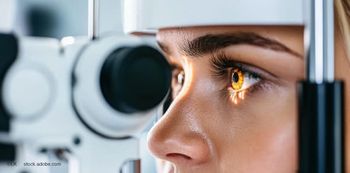
AAO 2025 Takeaways: The next frontier in retinal therapeutics arrives
Key Takeaways
- Senolytics, like UBX-1325, show potential in multimodal regimens for diabetic macular edema, despite not meeting primary endpoints in trials.
- Optogenetics offers mutation-independent vision restoration for IRDs, with promising early-phase results in retinitis pigmentosa and Stargardt disease.
Editor's Note: This content was generated with the assistance of AI.
At AAO 2025, the conversation around retinal disease treatment moved decisively toward the future—one defined by senolytic agents, next-generation gene and optogenetic therapies, disease-modifying approaches for inherited retinal diseases (IRDs), and a more nuanced understanding of drug safety. Presentations by David Eichenbaum, MD; Stephen Tsang, MD, PhD; Kenneth Fan, MD; and Sharon Fekrat, MD, FACS, provided a panoramic view of the breakthroughs driving retinal care forward. Collectively, their work signals a shift from incremental refinements to fundamentally new therapeutic paradigms.
Eichenbaum: Senolytics Move From Concept to Clinical Contender
Eichenbaum’s discussion of the ASPIRE Phase 2b trial of UBX-1325 (foselutoclax) offered one of the meeting’s most data-rich explorations of emerging mechanisms. Although UBX-1325 failed to meet its primary non-inferiority endpoint against aflibercept at Week 24, several findings highlighted its potential:
- The therapy did achieve non-inferiority at Week 36.
- Subgroup analyses showed better visual gains in patients with less severe disease (CST <400 µm or DME <3.5 years).
- Safety was excellent, with no intraocular inflammation or vasculitis.
Eichenbaum stressed that DME is inherently multifactorial, and the era of monotherapy is ending. With senescence implicated in chronic inflammation and microvascular dysfunction, senolytics may ultimately function best as part of a multimodal regimen. His takeaway resonated strongly: even imperfect trials can advance the field by clarifying where new classes of drugs fit within increasingly personalized treatment algorithms.
Tsang: Optogenetics Offers Hope for Mutation-Independent Vision Restoration
While senolytics explore a novel cellular target, optogenetics is redefining what may be possible for advanced IRDs. Stephen Tsang, MD, PhD, shared early-phase findings from optogenetic therapy trials in retinitis pigmentosa (RP) and Stargardt disease, revealing meaningful, mutation-agnostic improvements.
Patients with RP gained an average of 15 letters, while Stargardt patients gained 9 to 13 letters, particularly when used with light-amplifying goggles. These improvements translated into real-world functional gains, including enhanced mobility and object recognition.
Perhaps the most exciting insight was the broad applicability of optogenetics. With over 80 genes linked to RP and more than 500 mutations associated with Stargardt disease, mutation-specific gene editing remains a monumental challenge. Optogenetics bypasses the complexity entirely, offering a single strategy capable of helping a wide swath of patients.
Safety has also been encouraging. Early trials have reported no uncontrolled inflammatory events, and adverse reactions were manageable with standard steroid protocols. Tsang emphasized that optogenetic therapy is still in early stages, but its potential is vast and its direction clear: accessible, mutation-independent photoreceptor restoration.
Fan: Stargardt Disease Takes a Big Step Forward With MCO-010
If Tsang showcased optogenetics in concept, Kenneth Fan, MD, demonstrated its real-world application through the STARLIGHT Phase 2 study of MCO-010, an optogenetic therapy designed for Stargardt disease.
Although the trial’s primary focus was safety, Fan reported encouraging efficacy signals—particularly in patients with a macular phenotype of Stargardt, where three participants showed meaningful visual acuity gains at 48 weeks both with and without a wearable magnifier. Notably:
- No incidents of retinitis or vasculitis occurred.
- Transient vitreous cells resolved without consequence.
- Treatment improved best-corrected visual acuity in the subgroup most likely to benefit.
Fan highlighted how rare it is to see visual improvement in Stargardt, given its progressive degenerative nature and lack of approved therapies. The data, though early, underscore a turning point: targeted gene and gene-adjacent therapies are beginning to rewrite expectations for diseases once considered untreatable.
Fekrat: Understanding Retina-Drug Interactions Starts With Awareness
While innovative therapies dominated much of the AAO spotlight, Sharon Fekrat, MD, provided an essential counterbalance by examining retinal toxicity associated with antipsychotic medications. Her presentation reinforced a core principle of retina care: not all retinal pathology originates in the retina itself.
Fekrat highlighted:
- Thioridazine, a first-generation antipsychotic, remains relevant despite being discontinued in 2005 due to delayed toxicity.
- It can cause pigmentary retinopathy progressing to nummular RPE and choriocapillaris atrophy, especially at doses >800 mg/day.
- Second-generation agents like risperidone rarely cause retinal toxicity but have been linked to cystoid macular edema in isolated cases.
- Psilocybin, despite widespread recreational use, has no known retinal toxicity.
Her key message was a reminder: systemic medications remain an underappreciated variable in retinal diagnostics. In a therapeutic landscape increasingly layered with new drugs, biologics, and gene therapies, awareness of medication-induced retinal changes is more important than ever.
The AAO 2025 Retinal Therapeutics Takeaway
From senolytics to optogenetics to real-world drug safety, AAO 2025 showcased a field in rapid transformation. The next generation of retinal care will be:
- Mechanistically diverse, moving far beyond anti-VEGF
- Mutation-independent, with options for previously untreatable IRDs
- Safety-conscious, informed by robust real-world surveillance
- Personalized, shaped by disease stage, phenotype, and molecular pathology
If 2024 was the year of incremental enhancement, 2025 marks the start of a therapeutic renaissance. For many retinal diseases, especially inherited ones, AAO 2025 may be remembered as the year hope became momentum.
Newsletter
Don’t miss out—get Ophthalmology Times updates on the latest clinical advancements and expert interviews, straight to your inbox.













































.png)


